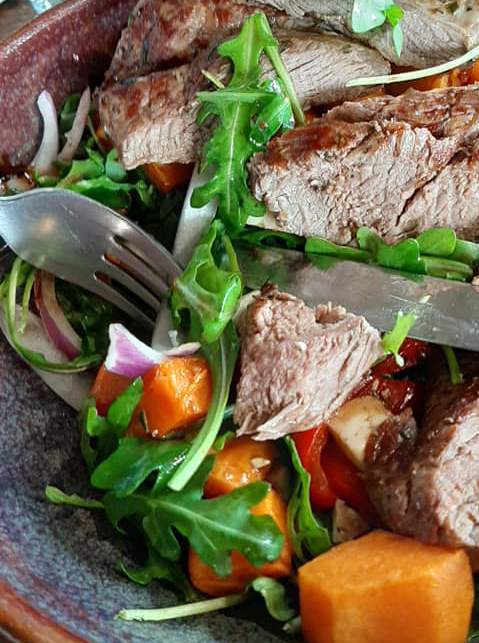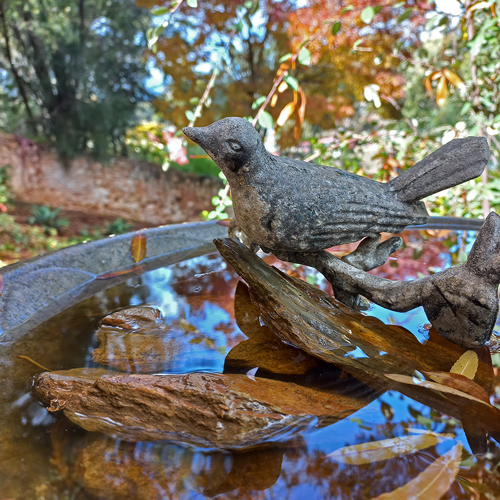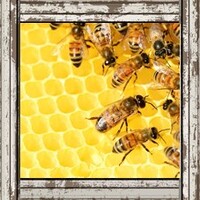Care for Bees > Help Our Farmers > Help Our Environment
Author: Gracie Date Posted:31 May 2023
We all hear that Aussie farmers are struggling. Some of us are those Aussie farmers. But there is a species that is integral to our farmer's success that is also struggling – the humble honey bee.

These insects are critical to the success of most of Australia’s crop production.
65% of horticultural & agricultural crops are dependent on pollination by honey bees, and 75% of them gain benefits from bee pollination. Just this snapshot gives us good insight into exactly how important these little guys are to our country’s food production. Many producers lease commercial hives for pollination, and according to the Australian Honey Bee Industry Council, the honey bee industry in Australia is worth more than $14 billion annually!!!
Although honey bees are an introduced species (to Australia), so are many of our crops. These crops rely on honey bees for pollination. One in three mouthfuls of food we eat relies on honey bees for pollination. That third forkful of food when you sit down for dinner tonight? A honey bee made that possible. Who would have thought? Having said that, a staggering 70% of honey that is produced in Australia comes from our native flora, so honey bees range far and wide.
bees are an introduced species (to Australia), so are many of our crops. These crops rely on honey bees for pollination. One in three mouthfuls of food we eat relies on honey bees for pollination. That third forkful of food when you sit down for dinner tonight? A honey bee made that possible. Who would have thought? Having said that, a staggering 70% of honey that is produced in Australia comes from our native flora, so honey bees range far and wide.
The above statistics are all about the introduced Honey Bee. We're all familiar with the honey bee, right? But did you know that Australia has over 2,000 species of native bees? Ranging from the spectacularly large 24 mm yellow and black carpenter bees to the tiny 2mm Quasihesma bees, they have a wide array of shapes, sizes, and behaviours. Australian native bees are important pollinators of our magnificent wildflowers and native plants; however, they could also make a valuable contribution to Australian agriculture. We need more research into the use of Australian bees in agriculture, especially with the outbreak of varroa mites that the industry is currently struggling with, but for now, the honey bee is still our primary pollinator on an agricultural level.
What does all that have to do with you? Well, you can make a difference to all our struggling bees – introduced and native – with a few simple actions.
Don’t ditch my blog here!
If you’re reading this thinking ‘Hell no, I don’t want to be encouraging bees around my place!’, then hang in here for a few more lines!
 Are you allergic to bees? Just plain scared of them? Well, here’s some wonderful news. You can relax about the bees in your garden. Bees are very placid, and the last thing they want to do is sting you - because then they die! In my personal experience, the best ways to get stung include treading on bees, sitting on bees, and squashing bees inadvertently when you pick up the hose. Yes, before you ask, I have been stung on the backside. So, wear shoes, look before you sit down, and look at what you’re going to wrap your hand around before you wrap your hand around it!
Are you allergic to bees? Just plain scared of them? Well, here’s some wonderful news. You can relax about the bees in your garden. Bees are very placid, and the last thing they want to do is sting you - because then they die! In my personal experience, the best ways to get stung include treading on bees, sitting on bees, and squashing bees inadvertently when you pick up the hose. Yes, before you ask, I have been stung on the backside. So, wear shoes, look before you sit down, and look at what you’re going to wrap your hand around before you wrap your hand around it!
Recent studies show that bees learn, play, remember, think, make decisions, and even recognize and differentiate between different human faces.
So, the next time you see bees in your garden, take a moment to just observe them and appreciate their intelligence and all the ways their activity benefits us.
And here are those simple actions:
Select bee, bird, and butterfly friendly plants when you are planning or adding to your garden. Gum trees, Bottle Brushes, Wattles, Tea Tree, Emu Bush, Bush Peas, Native Lilac, Daisies, Boobialla, Cassia, Velvet Bush, and Black-eyed Susan are all good options. For more inspiration, click here.
Don’t use chemicals and pesticides to treat your lawn or garden. Bees are very sensitive to herbicides and pesticides. Mass deaths of bees in a particular area is a big contributor to Colony Collapse Disorder. There are lots of more environmentally friendly options to achieve a pest-free garden. Some natural pesticides you can easily make at home include:
- Neem Oil
This repels a variety of bugs such as aphids and mites as well as powdery mildew. A spray bottle containing no more than 3% oil with 97% water is sufficient. - Vinegar
The acidic nature of white wine vinegar and apple cider vinegar is a very effective weed killer. Mix vinegar (3.5 lt), Epsom salt (1 cup) and castile soap (1 tablespoon) and fill a watering can or spray bottle and apply directly to weeds. This is a fabulous, natural, weed-killing cocktail that won’t harm bees at all. - Epsom Salt
If you haven’t used all yours in your bath, Epsom Salts can also effectively keep slugs and snails off the garden. Sprinkle the salts around the base of the plants and apply a half salt and half water saline spray to the leaves. - Chrysanthemums
Are a natural pest repellent that contains a compound called “pyrethrin” and can be companion planted with more desirable plants to repel pests from the area. - Pepper, Garlic and Onion
A handful of chili flakes or fresh chilli, garlic and onion pulverised and added to a few cups of water, boiled and then cooled and added to a spray bottle will effectively get rid of those little insects that will eat your precious garden. Make sure you wear gloves and don’t touch your eyes when using this mixture! - Essential oils
Oils like eucalyptus, orange, peppermint, and rosemary sprinkled around the garden or added to water in a spray bottle are amazingly effective at repelling little bugs and fungus growth.

Consider adding a bee-friendly water feature to your garden. This is a source of water that bees aren’t in danger of drowning in. A fountain that drips over an edge that they can land on, or one that has rocks protruding from the water are both safe and effective ways to provide a water source for bees.
There you have it! Support our bees – native and otherwise – and you will be supporting our farmers, our food resources and the amazing, diverse, natural environment that we are lucky enough to call home.






